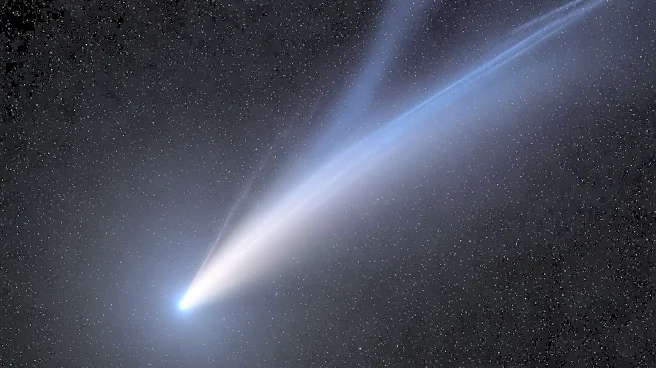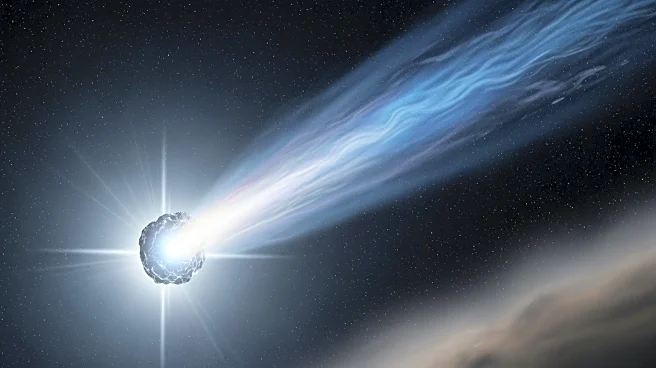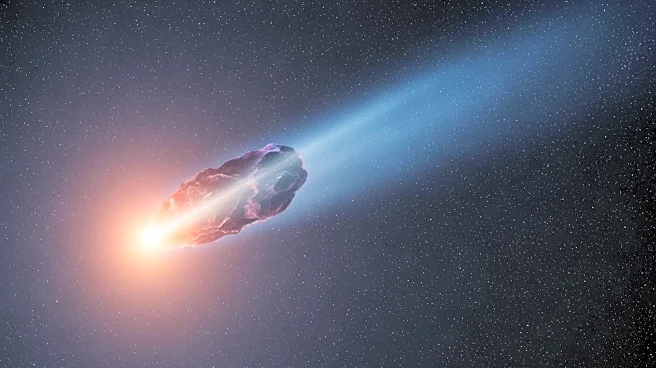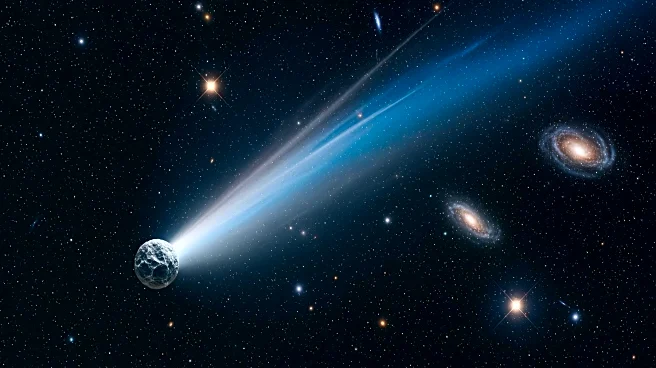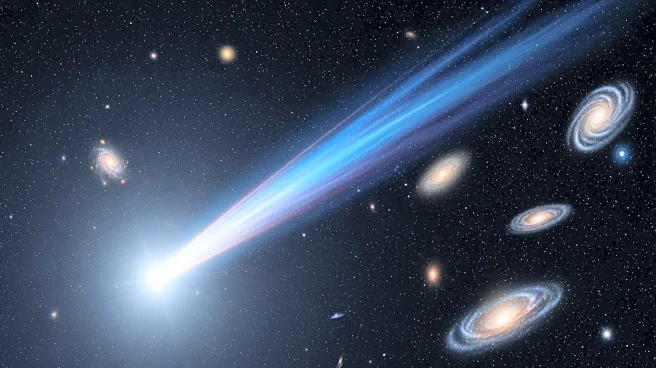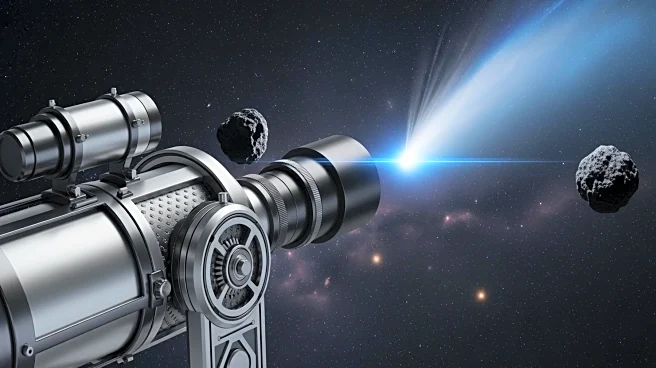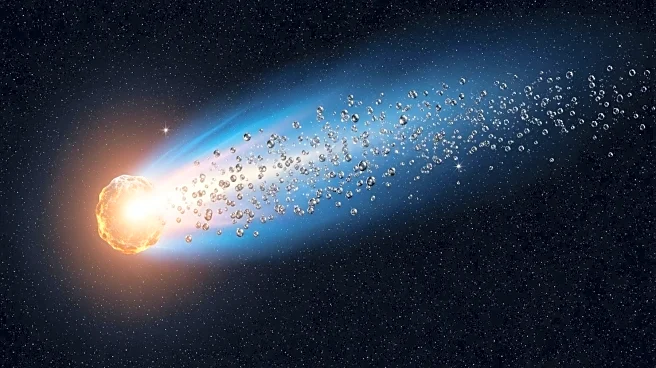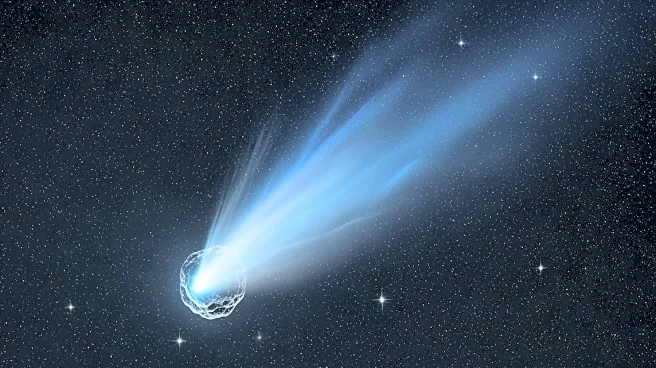What's Happening?
The interstellar comet 3I/ATLAS is making its closest approach to Earth on October 29, 2025, providing astronomers a rare opportunity to study materials from beyond our Solar System. Discovered in July
2025 by the Asteroid Terrestrial-impact Last Alert System (ATLAS) in Hawaii, the comet is traveling at high speed and follows a hyperbolic trajectory, indicating it will pass through the Solar System only once. Scientists are eager to analyze its composition, which includes carbon dioxide, hydrogen cyanide, and atomic nickel vapour, to understand the building blocks of other worlds.
Why It's Important?
3I/ATLAS's approach offers a unique chance to study interstellar materials, potentially revealing insights into the formation of planetary systems and the origins of life. The comet's composition and trajectory provide clues about its origins from another star system, enhancing our understanding of cosmic processes. This event underscores the importance of international collaboration in space research and the role of observatories in tracking celestial objects.
What's Next?
Astronomers will continue to observe 3I/ATLAS using ground-based and space telescopes to gather data on its chemical structure and activity near the Sun. The comet will remain visible for several months, allowing for extended study. Researchers aim to decode its mysterious tail and orbit, contributing to the broader understanding of interstellar phenomena.
Beyond the Headlines
The study of 3I/ATLAS may lead to advancements in theoretical models of cometary behavior and interstellar travel. Ethical considerations regarding the exploration of space and the potential for discovering life-supporting materials are also relevant. The comet's visit highlights the ongoing quest to understand our place in the universe.


